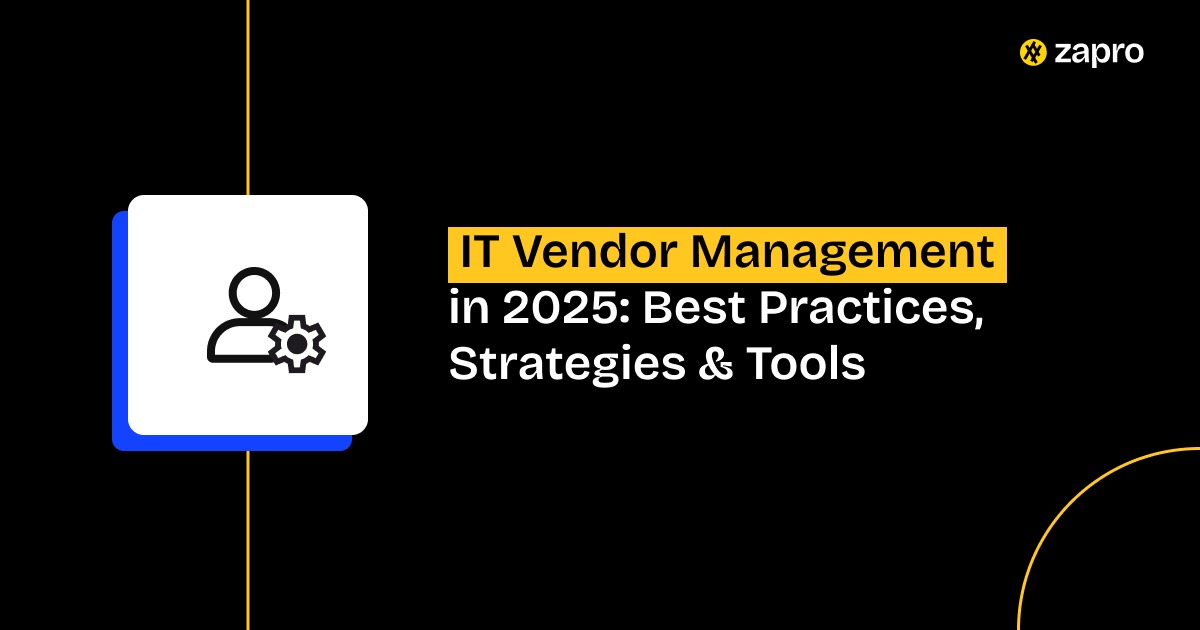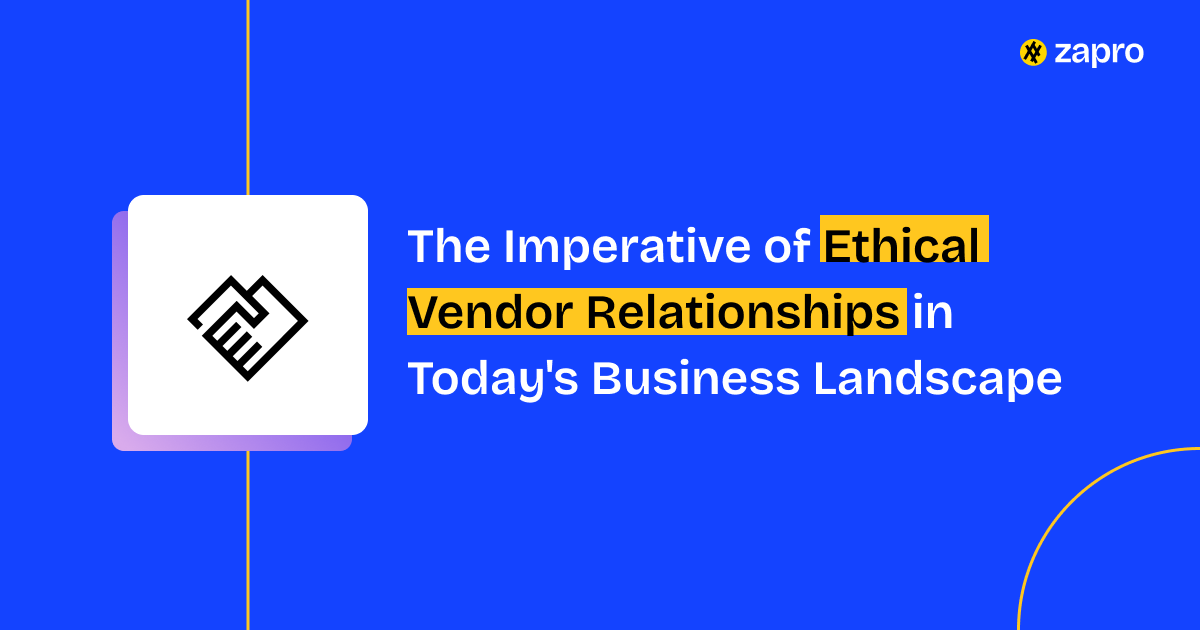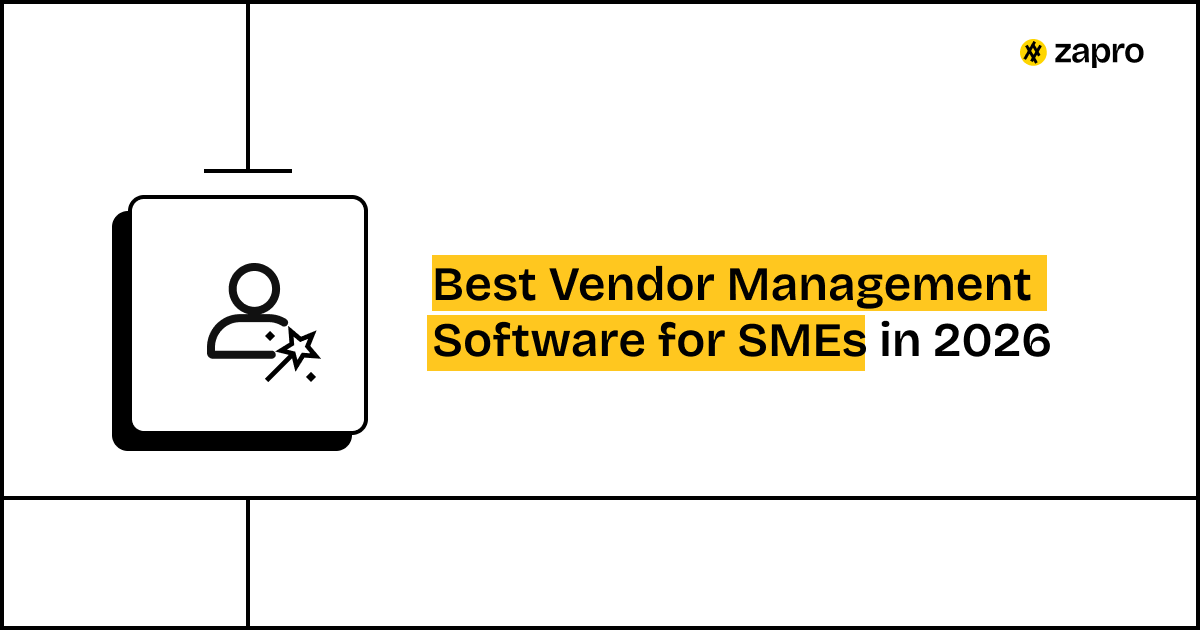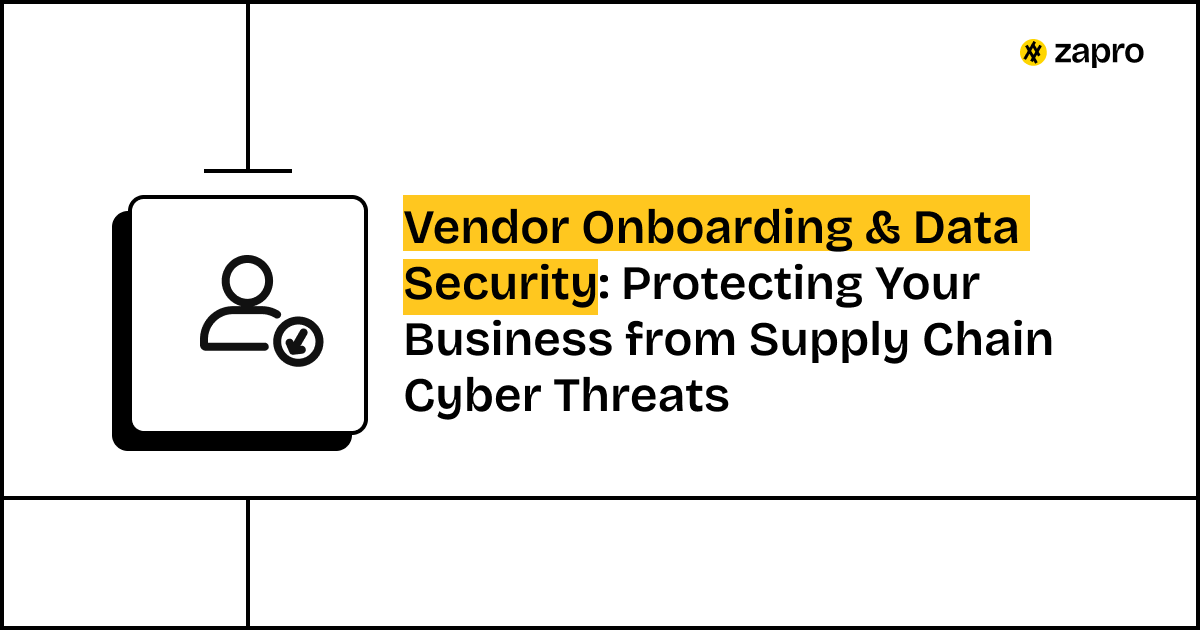What is IT Vendor Management?
IT Vendor Management represents the complete system of practices which enables organizations to choose external IT-service providers and technical product suppliers and maintain their relationships through monitoring and governance.
The process includes vendors who provide:
- Hardware
- On-premises software
- SaaS solutions
- Cloud infrastructure
- Cybersecurity services
- Managed services
- Network services
- Integrations/APIs
- Related technology solutions
The process includes all the following steps:
- Vendor evaluation and selection
- The organization handles both contract negotiations and the creation of Service Level Agreements (SLAs).
- The organization integrates new vendors into its existing IT system structure after onboarding them.
- The process includes continuous performance tracking and risk evaluation.
- The organization plans for contract renewals, exit procedures, and transition processes.
How IT vendor management differs from traditional vendor management
The process of IT vendor management stands apart from traditional vendor management practices.
Key differences between general vendors and IT vendors:
- Nature of delivery
- General vendors deliver physical products and services.
- IT vendors deliver software and cloud-based managed services.
- Risk factors
- General vendors create two main risks: cost and delivery performance.
- IT vendors introduce additional risks such as security threats, data protection, and integration challenges.
- Performance evaluation
- General vendors are evaluated on cost, quality, and delivery speed.
- IT vendors must demonstrate uptime performance, achieve Service Level Agreement (SLA) targets, and protect data security.
- Contract terms
- General contracts remain basic.
- IT contracts include provisions about data ownership, compliance, and exit strategies.
- Pace of change
- General operations change at a slower rate.
- The IT sector experiences fast-paced evolution through ongoing system updates and system integration processes.
Importance in the modern IT ecosystem
Organizations in the present era heavily rely on outside providers to manage their fundamental operational activities through:
- Cloud hosting
- SaaS tools
- API service providers
- Cybersecurity solutions
- Risks from inadequate vendor management
Organizations face:
- Service disruptions
- Data breaches
- Compliance issues
when they select inadequate vendors or fail to monitor them properly.
- Impact of growing SaaS and cloud services
- The growing number of SaaS and cloud services creates more dependencies for organizations.
- The interconnected nature of multiple tools through integrations and data flows makes vendor risk spread across different systems.
- Risks associated with IT vendors
- IT vendors who handle sensitive regulated data face significant risks.
- IT vendors who influence customer experiences through performance and availability issues also face significant risks.
Why IT vendor management is critical for businesses
The growing complexity of IT systems has become a major challenge for organizations.
Key challenges
- Businesses today operate with multiple SaaS applications, hybrid cloud systems, APIs, and integrations, which create numerous vendor dependencies.
- The lack of oversight in tool adoption through Shadow IT practices leads to increased operational risks and duplicated systems.
| Stat: Third-party vendors serve as common targets for cyberattacks because research indicates that breaches affecting more than 60% of organizations involve them. |
- Organizations face enhanced regulatory requirements because GDPR, CCPA, and sector-specific rules need closer vendor monitoring.
What are the key business benefits?
1. Cost optimization
- Businesses can reduce waste by eliminating unused SaaS seats and unneeded infrastructure provisioning.
- Businesses achieve better pricing and simplified administration through vendor consolidation.
- Businesses should detect hidden expenses such as data egress fees and scaling restrictions before they become major problems.
2. Risk reduction
- The process of proactive risk assessment enables organizations to identify and control security, compliance, and operational threats.
- Organizations should verify that vendors maintain financial stability, effective disaster recovery systems, and support infrastructure.
- Organizations can reduce system failures and security breaches through enhanced monitoring systems.
3. Improved vendor performance
- Organizations should implement SLAs, KPIs, and scorecards to monitor vendor performance while maintaining accountability.
- Continuous assessment enables organizations to discover new solutions which match business requirements better.
| Organizations that deploy clear performance metrics (such as SLAs and KPIs) achieve up to a 40% improvement in vendor delivery reliability and a 31% reduction in service outages. – Venminder |
4. Regulatory compliance
- Financial institutions and healthcare organizations must follow third-party risk management requirements which have become mandatory under new standards.
- Organizations must disclose data handling practices, transfer methods, and breach response procedures to meet privacy regulations.
| Emerging trendsThe process of vendor assessment needs to continue after the initial onboarding stage.The combination of SaaS sprawl and increasing vendor numbers drives up both expenses and security threats for organizations. |
Key components of IT vendor management
1. Vendor selection and evaluation
- Organizations should implement RFPs/RFQs to create standardized evaluation criteria for vendor comparison.
- Organizations should evaluate vendors through criteria which extend past pricing to include scalability, security posture, support quality, and product roadmap alignment.
2. Contract and SLA management
- Organizations should definitely establish negotiation terms which can combine affordable costs with adaptable conditions and maybe some protective measures.
- Service Level Agreements (SLAs) must also include details about key things like system availability, response times, data rights, and emergency procedures.
- Automated tracking systems should be used for monitoring SLA compliance whenever possible.
3. Performance management
- Organizations need to establish specific performance indicators such as uptime metrics, incident response times, and cost reduction achievements.
- Organizations should implement scorecards and dashboards for regular performance tracking and present results to vendors through these systems.
4. Relationship management
- Organizations should handle vendors as essential business partners instead of treating them as basic service providers.
- Organizations should dedicate resources to build enduring vendor relationships through collaborative projects, open dialogue, and innovative solutions.
- The organization needs established procedures to handle conflicts before they reach critical stages.
5. Risk and compliance management
- Companies should definitely need to evaluate some third-party cybersecurity practices to decrease potential risks from external vendors.
- The organization must also verify that its data protection standards meet gold standards like GDPR and CCPA requirements.
- The organization should also perform scheduled third-party audits. Due diligence assessments to stay compliant with regulatory requirements is also definitely helpful.
IT vendor management process: A step by step guide
IT vendor management requires more than contract signing because it needs a systematic approach to achieve business value while reducing potential risks.
A defined framework enables organizations to maintain alignment between vendor selection and onboarding and performance management and compliance with business and IT objectives.
1. Create a vendor management strategy
- The first step requires organizations to create a vendor management strategy which supports their IT objectives.
- The organization needs to establish performance targets including cost efficiency, scalability, innovation, compliance, and risk management.
- Vendor targets must match the overall IT and business strategic direction.
2. Define vendor selection criteria
- Establish minimum requirements for security standards, technical compatibility, support capabilities, financial stability, and cultural fit.
- Distinguish between essential capabilities and desirable features.
3. Distribute RFP/RFQ documents
- Use structured RFPs/RFQs to obtain equivalent proposals from vendors.
- Documentation should clearly present technical requirements, compliance needs, and evaluation metrics.
4. Negotiate and finalize contracts & SLAs
- Try to obtain beneficial pricing terms that can protect you against unexpected expenses.
- Companies should create SLAs to establish good standards for factors like uptime, response times, and data management responsibilities.
5. Onboard vendors effectively
- Establish process and system connections and define roles and communication standards for vendor integration.
- Train staff members about vendor tools and escalation procedures.
6. Monitor vendor performance
- Continuously check vendor performance levels.
- Focus on three key indicators: SLA compliance, response times, and usage efficiency.
- Implement dashboards and scorecards to provide stakeholders with visibility.
7. Implement risk mitigation frameworks
- Perform periodic evaluations is very important particularly for cybersecurity, operational, and compliance risks.
- So you need to establish backup plans for system outages, security breaches, and vendor disruptions.
8. Conduct periodic reviews for optimization
- Perform vendor relationship assessments at predetermined intervals.
- Search for opportunities to merge vendors, decrease costs, and expand innovative solutions.
IT vendor management: What are the challenges and solutions
IT vendor management faces multiple obstacles which require specific solutions to address them. The correct framework does not eliminate all challenges which come with IT vendor management.
The combination of SaaS expansion and changing compliance requirements and increasing cyber threats makes it more difficult to maintain vendor control. The following section identifies typical vendor management problems together with their corresponding solutions.
1. Vendor proliferation
- The management of multiple SaaS and cloud vendors becomes difficult when organizations work with dozens or hundreds of vendors.
- A vendor management platform should centralize data and workflow management to eliminate duplicate work and enhance monitoring capabilities.
2. Lack of SLA transparency
- The lack of transparent performance issue reporting from vendors creates unaccountable gaps in their operations.
- Real-time tracking of SLA breaches becomes possible through automated dashboard systems which provide instant alert notifications.
3. Vendor lock-in
- The practice of depending on a single provider for all needs creates both limited flexibility and higher expenses.
- Organizations should create vendor diversity plans which include exit terms and interoperability standards during the selection process.
4. Data security and compliance risks
- Third-party vendors experience regular cyberattacks which endanger both their sensitive data and their compliance status.
- The solution requires security-first due diligence integration with regular audits and strict enforcement of GDPR and CCPA and industry-standard compliance rules.
5. Cost overruns
- The combination of concealed fees and unused licenses and excessive resource provisioning leads to increased IT expenses.
- IT spend visibility tools help organizations track usage patterns and control renewal processes while discovering potential cost-saving opportunities.
IT vendor management best practices for 2025
IT vendor management success requires more than risk prevention because it demands organizations to create strategic partnerships that drive business expansion.
The following best practices will assist you in achieving your objectives:
a. Centralize vendor data
- A unified database should contain all information about contracts, performance reports, compliance verification, and spending records.
- The system reduces duplicate work and simplifies the oversight process.
b. Standardize contract processes
- The use of standardized templates and playbooks accelerates contract negotiations while protecting essential terms regarding data security, exit procedures, and service level agreements.
- The approach should focus on developing strategic vendor partnerships instead of treating them as simple business transactions.
c. Treat vendors as essential partners
- Treat vendors as essential partners who help drive innovation through collaborative efforts.
- Organizations should build trust by conducting scheduled meetings, developing joint plans, and maintaining open communication channels.
d. Invest in IT vendor management tools
- The modern platforms simplify the management of contracts and enable performance tracking and compliance oversight.
- These systems decrease human involvement while enhancing vendor accountability through their automated systems.
e. AI-based performance analytics
- AI-based performance analytics systems should be implemented for business operations.
- The system uses artificial intelligence to detect SLA violations, predict potential risks, and detect cost-saving possibilities before they become major issues.
- The system generates predictive data to help organizations make better choices about vendor renewals and consolidation activities.
f. Perform periodic assessments
- Perform periodic assessments of vendors to determine their ability to adapt to business expansion and their capacity to adopt new technological advancements.
- Your vendor assessment process should move beyond basic cost tracking and compliance verification to evaluate their ability to adapt to business expansion and adopt emerging technologies.
IT Vendor Management Tools to Consider in 2025
Managing IT vendors at scale is nearly impossible with spreadsheets and emails alone. The right vendor management tools centralize data, automate monitoring, and provide the insights needed to cut costs, reduce risks, and boost performance.
a. Zapro
Overview
Zapro functions as an AI-based vendor management platform which streamlines vendor operations from start to finish for businesses ranging from startups to mid-sized enterprises. The platform enables organizations to achieve compliance and risk reduction through its automated vendor onboarding, contract management, and artificial intelligence-based risk assessment tools. It connects seamlessly with ERP and procurement systems to deliver instant data and improve organizational decision processes.
Zapro combines simple user interfaces with automated processes that scale effectively for businesses at different growth stages.
Key features
- Contract management
- AI risk analytics
- ERP integration
- Vendor onboarding automation
Pros
- Scalable
- Easy to use
- Integrates well with existing enterprise systems
Cons
- Custom enterprise pricing
- Some advanced AI features require setup
Pricing
Starts at $299/month for startups; custom pricing for enterprises.
Get Started with the #1 Vendor Risk Platform

b. Vendr
Overview
The platform provides organizations with a dedicated SaaS procurement system that helps them optimize their SaaS worldwide. It enables automated SaaS buying and renewal processes and provides benchmarking through 35,000+ pricing data points.
Key features
- SaaS procurement workflow automation
- Spend analytics and benchmarking
- Contract negotiation assistance
- Renewal monitoring
Pros
- Clear pricing information
- Procurement specialists for negotiations
- Money-back guarantees
- Access to a wide range of pricing benchmarks
Cons
- Lacks complete SaaS management (no user provisioning or license tracking)
- Advanced features cost more than basic ones
- Focuses solely on procurement
Pricing
Starts at $36,000 per year for basic plans. Large businesses may spend up to $120,000 annually for full access.
c. Zluri
Overview
Zluri provides SaaS management and vendor governance capabilities through automated processes, compliance features, and identity governance functions. It serves IT teams handling complex SaaS environments.
Key features
- Unified vendor database and contracts
- Automated renewal and access management
- Advanced analytics and compliance tools
Pros
- Excellent automation and compliance tools
- Strong contract management
- Customizable reports
- Proactive alert systems
Cons
- Provides custom quotes instead of fixed rates
- Advanced features may be excessive for small businesses
- Requires time to learn
Pricing
$4 to $8 per user per month, average annual contracts ~$38,000. Organizations need to request custom quotes.
d. NetSuite
Overview
NetSuite is a cloud ERP system with a built-in vendor management module that integrates natively with financial and procurement operations.
Key features
- Vendor onboarding and centralized data management
- Contract and scorecard administration
- Automated invoice processing
- Vendor collaboration portal
Pros
- Full ERP and financial integration
- Vendor portal for communication
- Automated accounts payable and payment processing
- Customizable scorecards
Cons
- Complex implementation
- High total cost of ownership
- Best value for mid-large enterprises
Pricing
Starts at $999 per month plus $99 per user per month. Vendor management is an additional feature.
e. Onspring
Overview
Onspring is a flexible no-code platform offering vendor, risk, and contract management with automation and analytics features.
Key features
- Automated workflow management
- Contract and vendor data organization
- Real-time vendor dashboards
- Customizable performance indicators and reporting tools
Pros
- Complete customization through no-code interface
- Sophisticated risk assessment and analytics
- Supports large-scale operations
Cons
- Pricing is quote-based only
- Learning curve depends on configuration complexity
- May not fit small and medium business requirements
Pricing
Based on number of users, storage, and automation requirements. Offered in Bronze/Silver/Gold/Platinum tiers.
Summary of top IT vendor management tools
| Platform | Key Features | Pros | Cons | Pricing |
| Vendr | SaaS procurement, analytics | Large pricing database, expert support | Limited SaaS management, expensive | $36k–$120k/yr |
| Zluri | Contract mgmt, automation | Compliance, automation, centralized data | Custom pricing, learning curve | ~$4–$8/user/mo (avg. $38k/yr) |
| NetSuite | ERP integration, AP workflow | Full ERP integration, vendor portal | High TCO, complex setup | ~$999/mo+ (ERP); add-on pricing |
| Onspring | No-code, automation, KPIs | Customizable, strong analytics | Quote-only pricing, can be complex | Custom (tiers: Bronze to Platinum) |
| SAP Ariba | Lifecycle mgmt, analytics | Deep automation, top compliance | Complex, expensive | ~$25k/yr (mid-size), custom by scale |
| Zapro | Vendor onboarding, AI risk analytics, contract management | Scalable, AI-driven risk insights, ERP integration | Custom enterprise pricing, setup for advanced features | Starts at $299/month for startups; custom enterprise pricing |
Key features to look for in IT vendor management tools
The selection of IT vendor management tools requires features which extend past fundamental capabilities to handle modern organizational complexities.
1. Contract lifecycle management
- The vendor management system enables users to create and store contracts and SLAs.
- Supports managing renewals and tracking compliance requirements.
2. Automated risk assessments
- Performs ongoing monitoring of cybersecurity, compliance, and vendor financial health.
- Detects potential risks at an early stage.
3. Spend tracking and optimization
- Enables users to track IT expenses.
- Shows unused license information.
- Supports vendor consolidation efforts.
4. Performance monitoring
- Provides vendor scorecards and dashboards.
- Displays real-time performance metrics, SLA compliance rates, and risk indicators for accountability.
5. System integrations
- Integrates with ITSM and ERP systems.
- Maintains continuous data exchange between vendor tools, procurement systems, and IT service management platforms.
6. AI-powered analytics
- Uses artificial intelligence to identify:
- Potential vendor performance breakdowns
- Rising costs
- Upcoming contract renewal challenges
- Detects these issues before they become actual problems.
7. Regulatory reporting
- Produces reports which meet requirements for GDPR, CCPA, SOX, and industry-specific frameworks.
8. Scalability
- Maintains ability to handle large numbers of SaaS and cloud providers.
- Supports multiple vendors during business expansion.
How to measure success in IT vendor management?
IT vendor management success requires more than contract signing because it involves vendors delivering actual value throughout multiple time periods. Organizations use specific KPIs to monitor vendor performance while maintaining cost control and ensuring regulatory compliance.
The following list presents essential KPIs and metrics which organizations should monitor.
1. Vendor performance score
- The vendor performance score combines multiple assessment factors which include:
- Service Level Agreements (SLAs)
- Vendor responsiveness
- Innovation
- Service quality standards
2. Cost savings vs. budget
- The comparison between actual cost savings and budgeted expenses includes:
- Reduction of unnecessary license costs
- Optimization of existing contracts
3. SLA compliance rate
- The system monitors vendor performance by tracking their ability to fulfill SLAs regarding:
- Uptime
- Response times
- Support services
4. Risk prevention:
The number of security, compliance, and operational risks which proactive vendor oversight prevents from occurring.
5. Customer satisfaction improvement
The measurement of vendor performance through customer satisfaction improvement tracks benefits such as:
- Faster response times
- Improved service reliability
Your organization needs Zapro as its primary solution for IT vendor management in 2025
IT vendor management in 2025 demands more than basic spreadsheet management and separate tools. Zapro provides businesses of all sizes, from small to enterprise, with complete control, full visibility, and intelligent capabilities to achieve success. Here’s why:
1. Unified functionality
- The platform integrates all essential vendor management functions including contracts, SLAs, spend data, and risk assessment capabilities under one system.
2. AI-powered risk detection
- The system uses artificial intelligence to detect potential risks and Service Level Agreement violations which helps prevent major financial problems.
3. Scalable for all business sizes
- The platform provides basic functionality for small teams yet delivers advanced capabilities for managing complex IT infrastructure.
4. Spend optimization
- Enables users to detect unused SaaS licenses.
- Optimizes spending while obtaining improved vendor contract terms.
5. Compliance and reporting
- Provides automated reporting and audit trails.
- Simplifies GDPR, CCPA, and industry audit processes.
6. Actionable vendor insights
- Transforms vendor information into actionable data.
- Enables better performance and improved partnership development.
Your organization needs Zapro to transform its IT vendor management approach from reactive to strategic operations. Zapro provides immediate solutions to enhance your vendor relationship management through its current features. Ready to take IT vendor management from reactive to strategic?
Discover how Zapro can simplify and elevate your vendor relationships today.

Start Smarter with Zapro
Automate onboarding, track risks instantly, and stay ahead of compliance—all in one platform.
Don’t miss our weekly updates
We’ll email you 1-3 times per week—and never share your information.

 Healthcare
Healthcare Financial Services
Financial Services Technology
Technology Venture Capitalist
Venture Capitalist Chief Procurement Officer
Chief Procurement Officer Chief Financial Officer
Chief Financial Officer




